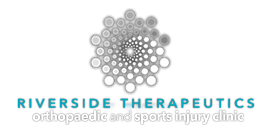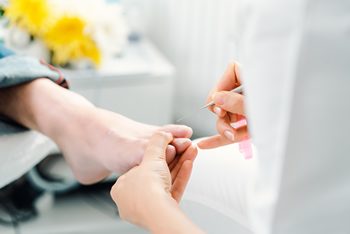Does it surprise you that a large number of the population will have some kind of trouble with their feet and will require the services of a medical foot care professional?
Did you know
- Each foot contains 26 bones and over 100 ligaments to keep your body stable
- There are more than 7000 nerve endings in you feet
- Each foot has approximately 125,000 sweat glands and can produce up to 250mL of sweat per day
- The average Canadian walks between 4500-5000 steps/day
We are thrilled to announce the addition of foot care services at our Riverside Therapeutics clinic. Medical foot care will be offered by our certified Registered Nurses and Licensed Practical Nurses and include the following services:
- Nail care (trimming; care of thickened, brittle, fungal, and ingrown nails)
- Corn treatment
- Callus treatment
- Bunion treatment
- Skin and wound care/ulcers
- Preventative practices and maintenance foot care
- Foot and lower leg assessments
- ABIs
- Diabetic foot care
- Foot health education
- Identification of potential foot health problems and recommendations of appropriate treatment and care
Advanced Medical foot care is beneficial to people with the following:
- Diabetics
- Arthritis/Rheumatoid Arthritis
- Peripheral Vascular Disease (decreased or poor circulation)
- Active wounds or a history of wounds
- Neuropathy
- Lymphedema
- Decreased dexterity
- Cancer
- Taking certain high risk medications (blood thinners, steroids)
- People who cannot adequately provide themselves with foot care.

